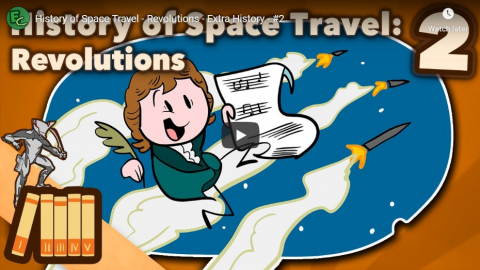Colby Cosh on a recent “grand theory” from Andrea Matranga, an Italian economist who outlined his thoughts in a paper accepted by the Quarterly Journal of Economics, summarized in the sub-hed “Hunter-gatherers were better off than Neolithic farmers, diet-wise — until Earth was hit by seasonal extremes caused by Jupiter’s gravity”:

Reconstruction of a neolithic farmstead at the Irish National Heritage Park in Ferrycarrig.
Photo by Jo Turner via Wikimedia Commons.
Matranga’s own explanation for the invention of agriculture is: “Believe it or not, it is down to extraterrestrial forces”. Yes, that’s an actual quote from a cheeky Twitter thread in which Matranga summarizes his hypothesis colourfully. The real idea is that the period of the Neolithic Revolutions coincided with a time when seasonal temperature and rainfall differences were maximized by coinciding features of Earth’s orbit — features attributable mostly to Jupiter’s gravitational tug on us.
The Earth goes around the Sun, or so they would have you believe, and Earth’s rotational axis is tilted relative to the Sun, which creates the seasons. But the Earth’s motion has other subtle wobbles and shimmies caused by Jupiter: the eccentricity of its elliptical orbit grows and shrinks, and the rotational axis “precesses”, or wobbles, meaning that the face of the Earth pointing toward the Sun at our closest approach to it changes over time.
The implication of this is that over a period of millennia, and particularly in what we think of as the “temperate” zones, the magnitude of climate seasonality will itself change in a somewhat chaotic way. For some periods much longer than a human lifetime, seasonal changes might be almost beneath notice; a few millennia later, they become a dominant feature of human experience. And one hemisphere of the planet — say, the northern one — might end up with a lingering developmental advantage because it was favoured at the right moment by the precession of Earth’s axis.
Matranga pulls together a lot of math, astronomy and geography to show that the local Neolithic Revolutions coincide with maximum local seasonality, and then he builds some economic models of primitive society to suggest what effect this might have had on social organization and population evolution. Alfred Marshall would have told him to burn this part of his paper, but perhaps the equations are necessary for appearances. The crucial point is that Matranga has found a strong possible explanation for the Neolithic paradox — why, and when, humans in many places adopted a form of social organization that seems to have left most of them worse off on average.
For it’s not just the average that matters. In a world that was more or less the same year-round, hunter-gatherers didn’t have to worry about food storage: they could migrate cyclically within a small range, following wild game, to keep up with modest seasonal effects. But if the seasons then got more intense, food storage would become more important to the long-term survival of the group: one winter could now finish everyone off.




